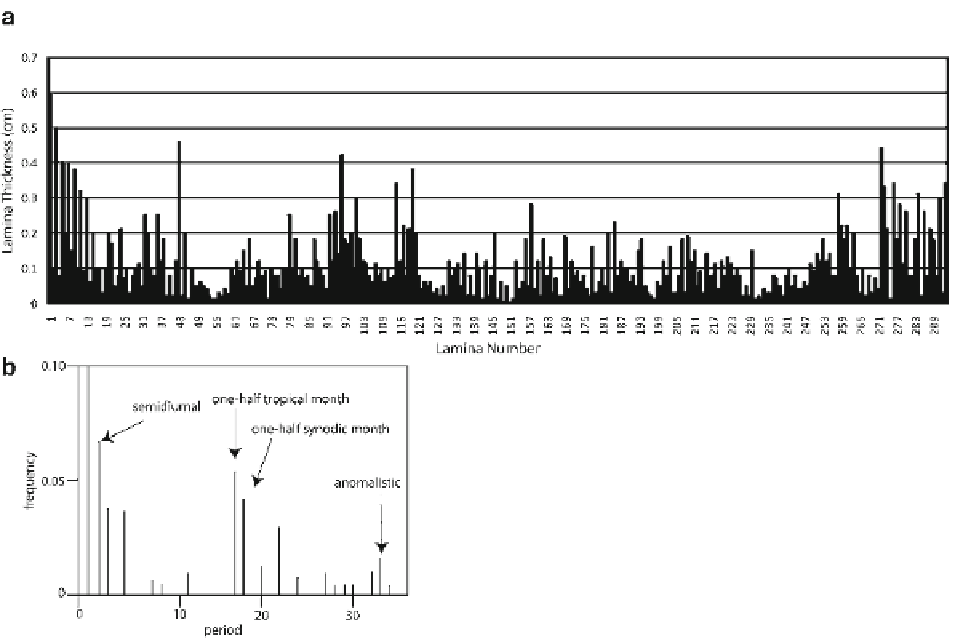Geology Reference
In-Depth Information
Fig. 14.14
(
a
) Lamina thickness versus lamina number for the
Cajiloa submarine canyon (see Fig.
14.11
). Notice the inequality
of the laminae thicknesses is quite pronounced, especially in the
beginning and end of the graph. (
b
) Fourier transform (power
spectrum) of the data from (
a
), with the semidiurnal, synodic
half-month, tropical half-month, and anomalistic periods high-
lighted. The presence of the other peaks may be indicative of
other currents or other tidal constituents
criteria, however, can be produced by turbidity currents
or contour currents (Kneller
1995
; Rebesco et al.
2008
), with the possible exception of a statistically-
signifi cant occurrence of thick-thin bundles (De Boer
et al.
1989
) and mud couplets
sensu
Visser (
1980
)
(Fig.
14.8
).
He et al. (
2008
) suggested that bidirectional cross-
lamintions or cross bedding, fl aser, wavy, and lenticu-
lar beds are normally observed in internal tide deposits.
Since all of these sedimentary structures can be pro-
duced in turbidity currents, however, they are not good
independent diagnostic criteria (Kneller
1995
) . He
et al. (
2008
) also suggested that there are characteris-
tic vertical successions in internal tide deposits, the
most recognizable being inverse to normal grading of
intervals (Fig.
14.7a, b, e
). While inverse to normal
grading undoubtedly occurs in tidalites, it can also be
a product of fl ood-generated turbidity currents
(hyperpycnal fl ows) or contour currents (Mulder et al.
2002
; Mulder et al.
2001
). If we look at what is genet-
ically unique to internal tidal currents, what stands out
is the cyclic nature of internal tides. Therefore, the
most convincing diagnostic criterion should refl ect
this cyclicity, either in statistically meaningful numbers
of thick-thin couplets or in repeated thickening-
thinning cycles, or both (Figs.
14.7
,
14.9
-
14.14
).
These cycles may be coupled with other criteria
that aid in the interpretation such as mud drapes or
couplets, reactivation surfaces, and bi- or multi-directional
cross-bedding, but without the evidence of cyclicity,
the other structures can as easily be explained by con-
tinuous or seasonal contour currents or by episodic
hyperpycnal or surge-type turbidity currents, which
after all can vary radically both spatially and tempo-
rally in energy and thus in erosion and deposition
(Kneller and McCaffrey
2003
) .

